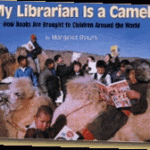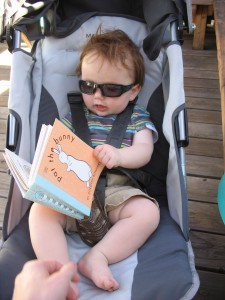I do most of my blogging in my head. (That’s my excuse for there being so few posts on my blogs.) I blog in my head while walking to school and on buses, in line at the grocery store, in the shower, lying in bed and so on. But then I get in front of the computer, I check Twitter, Facebook, email, read a heap of articles etc and never get back to the posts floating around in my head.
My friend, Edna (@whatedsaid), who has a great blog, really hoped I’d blog more when I was in Tanzania but it didn’t happen. I thought it would. I figured I would have empty evenings that would lend themselves to composing posts but no. I filled them hanging out with friends or waiting for webpages to load (the bandwidth was painfully slow). I blogged in my head but that’s as far as it got.
I know that part of the problem is that I like blog posts that have pictures and videos and links to all sorts of interesting connected and tangential articles and posts but it takes time to put together those sorts of posts.
After an exchange on twitter in early October about blogging in ones’ head between myself, Edna and Tanja (@tgaletti), Edna sent us both an email suggesting that maybe it would be less daunting if we set up a collaborative PYP T-L blog as we could invite others to contribute thereby relieving the pressure to post more frequently. (How exactly I could blog less frequently than I currently do is a bit of an enigma…) My reaction to the email? I read it, marked it unread and it is still in my priority inbox waiting for me to do something with it. While I appreciate Edna’s encouragement to blog more and appreciate her suggestions of a possible solution, the thought of a third blog for me to neglect is too daunting. (The other blog I currently neglect can be found here.)
Two nights ago, I sent Edna a tweet with the topic of my most recent in my head blog post: “gateway” books (ex. Captain Underpants and Rainbow Magic). She suggested I should bite the bullet and blog seeing as I had also tweeted about spending an hour replying to an email and said that the blog posts (that one and this one) wouldn’t take nearly as long. I did end up blogging that night but not about gateway books or blogging in my head. Instead I wrote about thoughts raised by the email I sent and posted it on my other blog.
Tonight Edna commented on that post and passed it along to Clive, Sir (@clivesir) who had the audacity to call me annoying saying I don’t blog enough. 😉 Well it worked. Two blog posts have made it from inside my head to outside in 3 days. I wonder when the next one will emerge… and will it be about gateway books or some other as yet unknown topic? In any case, don’t hold your breath.

















